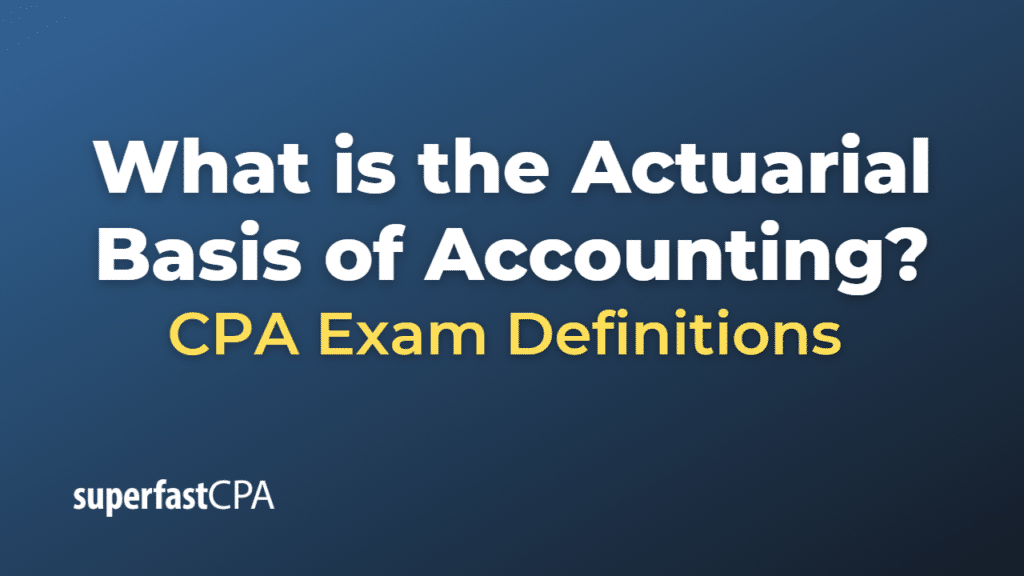Actuarial Basis of Accounting
The actuarial basis of accounting is a method used primarily in the insurance and pension industries. It involves estimating the present value of future cash flows, such as benefit payments or insurance claims, based on actuarial assumptions and calculations. This method helps companies determine the appropriate amount of reserves they need to set aside to cover future liabilities and expenses.
Actuarial basis of accounting incorporates various factors, such as mortality rates, interest rates, and other demographic and economic variables, to estimate future liabilities. Actuaries use statistical techniques and historical data to develop these assumptions and estimate the probabilities of future events.
For example, in the pension industry, actuaries will estimate the future benefit payments to retirees based on factors such as life expectancy, expected retirement age, and salary growth. Using these estimates, they will calculate the present value of those future payments, which helps the company determine the appropriate amount of funding needed to cover these liabilities. Similarly, in the insurance industry, actuaries will estimate future insurance claims based on factors like the probability of accidents, natural disasters, or other insured events.
The actuarial basis of accounting is essential for financial planning and risk management in industries with long-term obligations or commitments, as it provides a more accurate picture of a company’s financial position and potential future liabilities.
Example of Actuarial Basis of Accounting
Let’s consider an example using the pension industry.
Company A has a defined benefit pension plan for its employees. To fund the plan and ensure it has enough money to pay out benefits to employees upon retirement, Company A must estimate the future liabilities associated with these benefit payments.
To do this, an actuary will analyze various factors such as:
- The average age of the employees
- Expected retirement age
- Average salary growth
- Life expectancy after retirement
- The assumed interest rate on investments made by the pension fund
Based on this information, the actuary estimates that the total future benefit payments for the employees will be $10 million over the next 30 years. Using a discount rate (e.g., 5% per year) to account for the time value of money, the actuary calculates the present value of these future payments, which turns out to be $5.6 million.
Company A will need to set aside this amount ($5.6 million) in the pension fund to cover the estimated future benefit payments to its employees. The actuarial basis of accounting helps Company A understand its pension liabilities, ensuring it has enough funds to meet its obligations to employees upon retirement.
This method allows Company A to plan and manage its pension fund more effectively, making sure that the funds are appropriately invested and allocated to cover the future pension payments. It also helps the company comply with regulatory requirements and provides a more accurate representation of its financial position to shareholders and other stakeholders.













